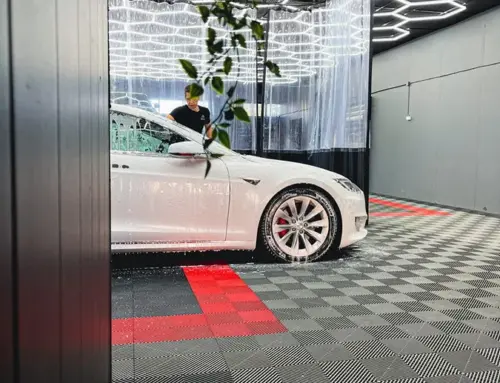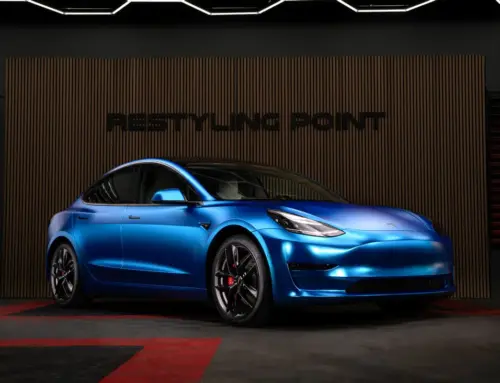
Is taillight tinting legal?
Can car lights be tinted? Tinting lights follows the same practice as tinting front windows, meaning they are completely illegal. Regardless of the law, we have observed that customers’ attitudes towards them are positive and favorable. So despite their illegality, almost everyone still opts for it. To be more precise: the popularity of light tinting is on the rise.
Covering taillights and headlights with tinted coatings or films, including films, is prohibited by law.
Taillight tinting is popular due to its aesthetic change and protective properties, which, at a relatively low cost, bring significant changes to the car and provide the best protection against scratches and stone chips.
Taillights are tinted because factory original lights are often too bright red or light. For example, BMW and Audi have started producing front and rear lights with darker optics or inner parts at the factory. Therefore, the trend is clearly that the car simply looks better if the lights are not bright red, etc.
Taillights and headlights must be E-approved to be legal and not cause any issues during inspection. Lights can be somewhat dark if they have an E-approved marking.
The E-mark approval is legislation that applies to member states of the European Union (EU).
In the field of wrapping, there is an official orientation towards specialized expertise, called light tinting. It is a craft with its own tricks and secrets to achieve a high-quality end result.

Light tinting film / lamp film
Before, and in many places still today, taillights were tinted using the most commonly used material of the time, which was an 80-micron thick PVC film with a relatively orange-peel surface and not very good transparency. Because of this film, it was easy to notice if the lights were covered and tinted. Therefore, the risk with this material is considerably higher than with modern PPF film.
Today, with the introduction of PPF films to the market, alternatives of tinting PPF (Paint Protection Film) films began to be used in our industry, of which there are a total of 3 degrees of darkness.
PPF film is 200 microns thick and has a consistently smooth surface and unmatched shine.
PPF material already has a chemical coating, i.e., Topcoat. The purpose of this coating is water repellency. With one installation, you get protection against physical damage, as well as protection against chemical damage, making it much easier to wash the car because it repels dirt and water.
Tinting PPF films have a self-healing surface. The technical term “SelfHealing” means that any wash scratches that occur during use will close up due to heat. Any form of heat, such as boiling water or a heat gun, is sufficient to achieve this.
Tinting PPF lamp film offers the best protection against scratches and stone chips, especially when considering the front of the car.
Compared to the old-fashioned PVC film, the material used today is the best looking, most durable, and therefore the least noticeable.
The shine and smoothness of the PPF film reduce the visibility of tinted lights during possible inspection situations. Many of our customers have repeatedly reported that taillight tinting was not even noticed during inspections.
The significant factor related to the risk of noticing tinted taillights is the quality of the installed film, i.e., how inconspicuously the work has been done.

Thanks to the light tinting standards developed by Restyling Point, the number of corrective actions required during our customers’ inspection situations is extremely low. In other words, we perform the work so accurately and professionally that the customer has all the cards in their favor in any inspection situation. The most common feedback from customers is: “I went for inspection, and they didn’t even notice.”
Price of taillight tinting
The most commonly used option for taillights is a medium-dark tint because it creates the most stylish result for the back of the car. When tinting taillights, it’s advisable to also tint the reflectors to achieve a balanced outcome. It’s important to consider the rear of the car as a whole, so even brake lights and reflectors should be darkened for a balanced look.
After taillight tinting, the lights are still visible to following drivers, and LEDs appear the most stylish because the film emphasizes the lines and shapes of the LEDs. Transparency naturally depends on the darkness level of the film used, so the darkest option isn’t always the best choice.

The average cost of tinting taillights is €179, if one taillight consists of two basic-shaped parts. These include, for example:
- BMW 1 – 7 series
- Audi A1 – A8 series
- Porsche Cayenne
- Volkswagen Tiguan / Touareg / Golf / Passat
- Skoda Octavia
- Seat Leon
- Mercedes-Benz GLC, GLE, A – S series

Taillights with more challenging shapes cost €239 – €299, for example:
- BMW X5, model year 2019 and later
- Toyota RAV 4 / Avensis, model year 2017 and later
- Volvo V70 and XC 40 / 60 / 90, model year 2015 and later
- Audi Etron and Q3 – Q8 models, model year 2015 and later
- Mercedes-Benz EQA, ECS
- Ford Focus, Fiesta


The complex taillights of Porsche Panamera and 911 models, along with the taillight strip connecting them, cost approximately €330.


Price of headlight tinting
The most commonly used shade for headlights is the lightest lamp film. It provides a brilliant appearance and reduces light output by approximately 5-10%. It is less conspicuous than a medium-dark film, making it the safest choice. Maintaining light output is a safety issue. If the background of the headlights is already dark from the factory, this must be considered when choosing the darkness of the tint film. In this case, the lightest tinting option is still the best.
Headlights are generally smaller and easier to work with, so their price averages around €149.
The most commonly used shade for headlights is the lightest one because it affects light output the least.
Headlights are often damaged due to stone chips, which may require polishing in the worst case to ensure good adhesion of the film. In new cars, such as Porsches, a hydrophobic chemical is factory-installed on the headlights, which must be removed to ensure maximum adhesion. Preparatory work / additional work adds to the price according to hourly billing.

If the headlights are significantly faded and damaged from stone chips, we recommend wet sanding. The wet sanding + polishing operation typically costs between €150 and €250. After wet sanding, it is essential to apply a protective film to ensure that the headlights remain in new condition for the next decades. No chemical UV protection prevents stone chips or prevents light from fading. Here you can find more comparison between coatings and films.
Headlight tinting is popular for protective purposes. If the headlights do not have a protective film in the transparent version, they are constantly exposed to stone chips and chemicals on the road. If a headlight suffers from stone chips, it loses light output when needed. In many inspection situations, headlights do not pass because they have received so many stone chips and have become dull and dangerous to drive with. Cracks are also a consequence of stone chips, which may require the headlight to be replaced. A new headlight unit can cost €4000 if it is equipped with modern lighting technology, such as LED Matrix functionality.

You can find completed works in our gallery.
Do you want the work to be done responsibly, on schedule, and with the best value for your money? Ask for a quote from Restyling Point’s professionals, who do this with quality standards, values, and love.
On WhatsApp: +358445050624
Phone: +358445050624
By Email: [email protected]
Restyling Point Ltd – The leader in wrapping and protective treatments in the Nordic countries











